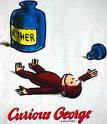Writer's Response to Bob Dylan's "A Hard Rain's A-Gonna Fall" (1963)
In this poem Dylan uses a variety of methods and techniques to craft his poem. The most obvious is the onslaught of imagery in every verse. Most interesting to me was the ambiguous symbolism of the imagery and the opposite images that are juxtaposed. The examples are everywhere: "...a highway of diamonds with nobody on it" (Stanza 2, Line 4), "ten thousand talkers whose tongues were all broken" (Stanza 2, Line 8), "Heard one person starve, I heard many people laughin',--Heard the song of a poet who died in the gutter,-- Heard the sound of a clown who cried in the alley," (Stanza 3, Lines 7-9). These juxtaposed opposites are used to create a tone of confusion and backwardness, of gloom and pessimism.
Also, the images are all of metaphorical things, not concrete realities, which gives the piece a mythical and rustic feel. Also, not being direct or obvious gives the poem more weight, and adds ambiguity, which in turn feeds the lost feeling the poem exhibits. There are a few places where the imagery seems more political and current ("I met a white man who walked a black dog" Stanza 4, Line 4) but even these could be read in different ways. That line in particular becomes complex when compared to the other lines depicting white or black colors. Another element I thought was interesting was the use of an answer and call between father and son, which contributes to the mythical feel and made me think of odyssey's.
These techniques (a mythical feel, juxtaposed opposites, ambiguity) all create the tone of confusion, doubt, weariness, etc. but also convey the content of the poem. They tell of a man's journey in which he discovers a world of opposites, illusions, and hypocrisy. This leads me to my final point and what I found to be the most interesting thing about the piece. The man comes back to his father after an apparently long, odyssey-like trip in which it seems he saw the world for the first time. And what does he find? He finds a backwards, unjust, and failed world on the brink of "a hard rain". However, instead of preparing for this black future and, weary from a long journey stay out of the rain, he does the opposite. He battles backwardness with forwardness, inaction with action, confusion with purpose, and hopelessness with hope. He decides to go back out and see what he can change before it is too late. In my favorite metaphor of the piece the traveling man is going, "Where the executioner's face is always well hidden," (Stanza 5, Line 8) apparently to take on those responsible for the injustices but who remain hidden and secure. The tone of the poem then takes a dramatic shift in the final stanza and completes the idea of using opposites. In that way its almost like he is writing in a meter of concepts. In individual lines: contrasting images. In format: father calling to son, and son responding. And finally the entire poem with the shift in tone and content. Even the last stanza is longer, which could be viewed as a substitution from the earlier format, and which would provide emphsize on the change from weariness to ambition (fittingly). All in all, Dylan's "A Hard Rain's A-Gonna Fall" uses vivid contrasting images to craft the tone, a mythic quality to inhance importance and push it past the confines of a topical song, and a tone/content shift to convey his message of hope and purpose amid despair and disillusion.
Monday, September 28, 2009
Subscribe to:
Post Comments (Atom)

I just listened to the song again and I can't help but agree. Especially the part about the executioner's hidden face. I relate it to the wars we fight now where our president sent us to fight but we dont know who influenced that decision and the real motives for it.
ReplyDeleteBryce, I very much agree with all your analysis. The father-son dialogue of the song is very interesting because the son has traveled the world and seen all these depressing things that he has to inform his dad about. Considering that it was written in the early sixties, the father-son dialogue may represent the generational gap of post WWII americans and their parents. The metaphors that the son has witnessed all seem like they represent societal shortcomings "I saw a highway of diamonds with nobody on it."
ReplyDelete